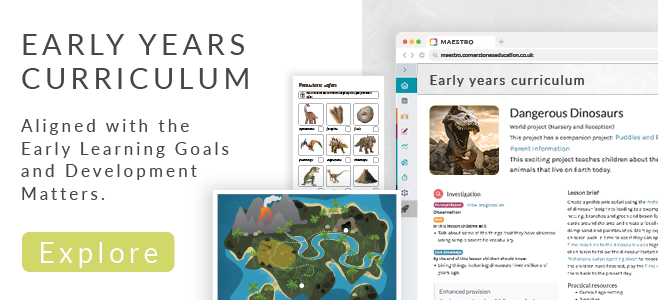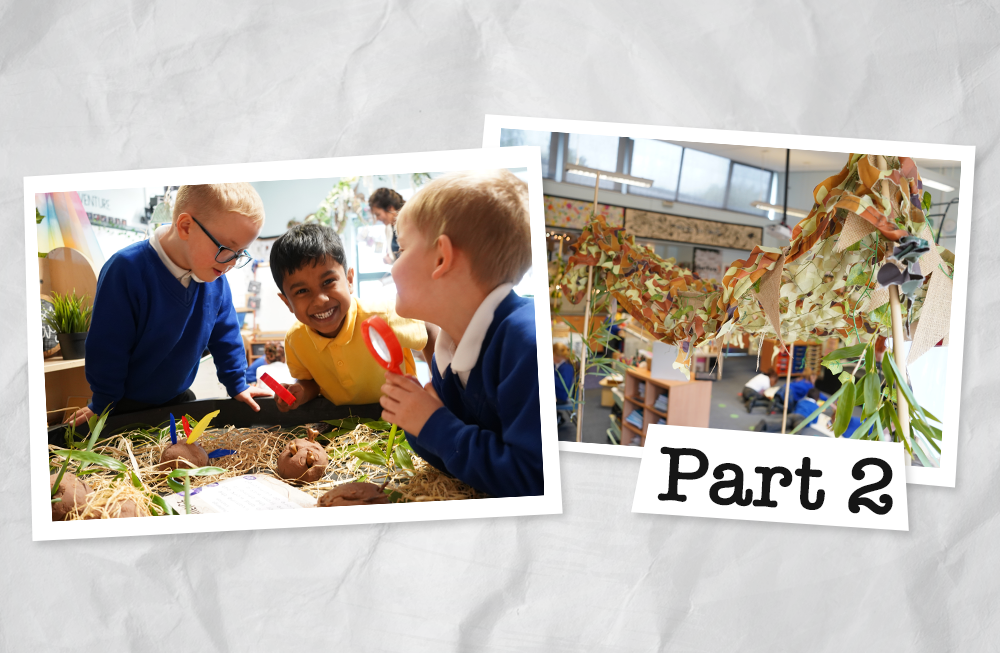In Part 1, we looked at approaches to learning in the early years and showed the importance of finding a balance between teacher-directed and child-initiated learning. This blog explores the fundamental principles of the EYFS and explains how to tailor teaching and the curriculum to suit children’s needs.
The unique child
Knowing your class and which learning approaches best suit individuals will help you to tailor your teaching to meet the needs of the children. It is crucial to understand which individuals or groups of learners might need extra support or an increased level of challenge.
Several studies have indicated that the most disadvantaged children may benefit from a more structured approach to learning. Use of pre-teaching opportunities, interventions or targeting children as they play, can support specific learners to develop key concepts, skills, knowledge, and vocabulary.
It is essential to know the children and their interests well to plan opportunities that will inspire learning. However, Clements and Samara suggest that, in mathematics, using ‘teachable moments alone are far from adequate.’ They explain that it is unrealistic for teachers to see opportunities for all children to build multiple mathematics concepts over the year.
If this is the case for mathematics, it is understandable that some teachers might feel daunted by the prospect of developing a curriculum based solely on children’s interests.
To build children’s learning in a sequenced and progressive way, it is necessary to have a clear plan of what you want to teach children across all areas of learning during their time in the EYFS. This curriculum plan should consider the needs of the children and their experiences before starting school. It also needs to show how learning builds children’s skills, knowledge, and vocabulary during their time in the EYFS and prepares them for learning in year 1 and beyond.
Once you have a curriculum framework in place, you can then decide how best to deliver the curriculum to suit the learning styles and needs of the children. See Part 1 of this blog for more information.
Positive relationships
Whatever your pedagogy for teaching and learning in the early years, it is essential to have a team of highly skilled adults who understand how children learn and develop. In our experience, the most effective way to build positive relationships with children is to take the time to join them in their play and have conversations with them. This less formal approach takes the pressure away from the children and provides time to find out about their interests, strengths, and areas to develop. In her article Sustained Shared Thinking: A Practical and Comprehensive Guide for Early Years Practitioners, Kathy Brody explores how practitioners can develop children’s learning through positive interactions. She looks at two key elements of Sustained Shared Thinking. The first is ‘active listening’, which encourages discussion and allows thinking to develop at the child’s pace. It is essential to observe the children as they play and listen carefully to what they have to say, to recognise gaps in their learning and understand how best to address them. The second element is ‘positive questioning’. Once the teacher has a good understanding of the children’s needs, they can then join in without taking over or ‘swamping the children with information or interrogation.’
It is essential that the conversations between teachers and children have a natural two-way flow, so that the children feel their play, ideas and contribution to the learning process are valued. Adult-directed tasks can benefit from this approach to learning. Using open-ended questions, pondering, inviting children to clarify their thinking and build on each other’s ideas will ensure children are actively involved in discussions.
Enabling environment
The Reggio Emilia philosophy sees the environment as the third teacher. An effective learning environment is set up with purpose and intent to ensure it provides opportunities for children to explore, experiment and develop and test their ideas. It is essential to use the knowledge of the children, their interests, strengths, and gaps in development to create an environment that actively supports learning. It helps to refer to the three characteristics of effective teaching and learning – playing and exploring, active learning, and creating and thinking critically – and consider whether the environment and resources inspire play and provide challenge.
Viewing the environment as the third teacher also provides the chance to reflect on whether there are opportunities for children to play and explore, be motivated to learn, keep trying, generate ideas, make links with learning, and work collaboratively. It is important to take time to observe areas of the classroom to see how children use the resources independently. This gives an insight into the learning and whether specific skills need to be modelled by adults to support learning, or whether extra enhancements are needed to add further challenge.
In conclusion
This blog series has explored the complexities of teaching in the early years, including the importance of play and finding the balance between child-initiated and adult-led learning.
In our experience, there is no one right way of teaching, so when deciding on the approach that best suits your children, it is important to consider:
- How your pedagogy links to your children’s needs and the experiences they encountered before starting school.
- The different approaches adults can use to support children with learning and development.
- How to create an environment that maximises challenge and engagement for all children.
Cornerstones can help you develop a cohesive curriculum that meets the needs of all children, while providing a balance between adult-led and child-initiated learning. For more information about how we can help, you can book a free consultation with our EYFS specialist.



